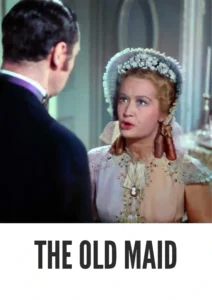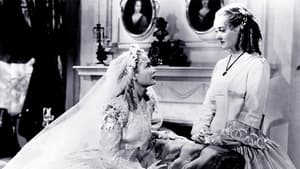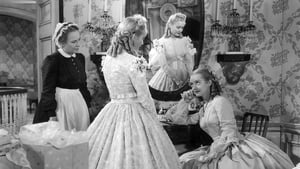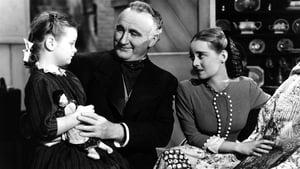Video Sources 0 Views

Download The Old Maid (1939) Colorized HD | Bette Davis | Drama Classic
Synopsis
Love, Sacrifice, and Secrets: The Old Maid (1939) in Stunning Color

Step back in time with The Old Maid, a deeply emotional drama from 1939, now beautifully colorized for a viewing experience that brings new life to this timeless story. Starring Bette Davis and Miriam Hopkins, and based on the Pulitzer Prize-winning novel by Edith Wharton (also known as The Old Maid: The ‘Fifties’), this film delves into themes of love, sacrifice, and societal expectations in the mid-19th century. Perfect for fans of classic dramas and those who appreciate powerful performances, this HD download offers a moving and unforgettable cinematic experience.
The Old Maid Storyline: A Tale of Hidden Motherhood and Societal Constraints
The Old Maid tells the story of Charlotte Lovell (Bette Davis), a woman who faces the consequences of an affair during her youth. When her former lover dies in the Civil War, Charlotte finds herself raising their child, Tina, as her niece to avoid the social stigma of being an unwed mother.Delia Ralston (Miriam Hopkins), Charlotte’s cousin and former rival for the affections of Clem Spender, becomes a prominent figure in Tina’s life, creating a complex dynamic between the two women. As Tina grows up, she is torn between her love for both Charlotte and Delia, unaware of the true relationship between them. The film explores the sacrifices Charlotte makes to protect her daughter’s reputation and the societal constraints that dictate their lives. Ultimately, The Old Maid is a poignant exploration of motherhood, love, and the enduring impact of secrets.
Movie Cast
The film features stellar performances from its lead actors, who bring depth and emotion to their characters:
- Bette Davis as Charlotte Lovell
- Miriam Hopkins as Delia Ralston
- George Brent as Clem Spender
- Jane Bryan as Tina (as a young woman)
- Louise Fazenda as Dora
Movie Genre
The Old Maid falls squarely into the drama genre, with elements of romance and historical fiction that enrich its narrative. Its focus on character development and emotional depth makes it a compelling and thought-provoking film.
Historical Context: The Golden Age of Hollywood
Released in 1939, The Old Maid is a product of Hollywood’s Golden Age, a period known for its high-quality storytelling, strong performances, and sophisticated production values. The film reflects the social and cultural norms of the time, offering a glimpse into the lives of women in the 19th century and the challenges they faced.
Colorization Details
This colorized version of The Old Maid has been meticulously restored using modern digital techniques, enhancing the visual appeal while preserving the film’s original emotional impact. The colorization process involved carefully analyzing the grayscale tones of the original black and white footage and assigning appropriate colors to each scene. This painstaking process brings new life to the characters and settings, making the story even more engaging for modern audiences. While opinions on colorizing classic films may vary, it introduces these films to a broader audience, ensuring their legacy for future generations.
Technical Details
- Director: Edmund Goulding
- Screenplay: Casey Robinson
- Based on: the play by Zoë Akins and the novel The Old Maid by Edith Wharton
- Cinematography: Tony Gaudio
- Edited by: Ralph Dawson
- Production Company: Warner Bros. Pictures
- Distributed by: Warner Bros. Pictures
- Runtime: 95 minutes
Technical Specifications
- Download Format: MP4
- Resolution: HD (1080p)
- Compatibility: Compatible with most devices, including smartphones, tablets, computers, and smart TVs.
Reviews and Critical Reception
The Old Maid (1939) received positive reviews upon its release, with critics praising the performances of Bette Davis and Miriam Hopkins. The film’s exploration of complex emotional themes and its faithful adaptation of Edith Wharton’s novel have made it a lasting favorite among classic film enthusiasts. As a poignant and thought-provoking drama, The Old Maid remains a powerful example of Hollywood’s Golden Age.
FAQs
- Q: What is The Old Maid about?
- A: The Old Maid is a drama about a woman who raises her illegitimate child as her niece to avoid social stigma.
- Q: What is the alternate title of The Old Maid?
- A: Another title of the movie is The Old Maid: The ‘Fifties.
- Q: Is The Old Maid (1939) a well-regarded film?
- A: Yes, The Old Maid is a well-regarded film known for its strong performances and emotional depth.
- Q: Is this version of The Old Maid colorized?
- A: Yes, this version has been professionally colorized to enhance the viewing experience.
- Q: What makes The Old Maid interesting for classic film fans?
- A: The Old Maid offers a compelling exploration of complex emotional themes and features stellar performances from Bette Davis and Miriam Hopkins.
- Q: What is the download format?
- A: The download format is MP4, which is compatible with most devices.
- Q: What resolution is the download?
- A: The resolution is HD (1080p), providing a high-quality viewing experience.
Download Now in HD!
Watch The Old Maid Today!















